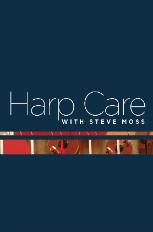[youtube http://www.youtube.com/watch?v=vaJ5BMa3GSE]
I had a reader recently write in in response to my article, “What is a Harp Regulation Anyway?” She referenced a section where I discussed checking the pedals for clicks and other issues:
“I check the motion of each pedal. Do they move smoothly? Do they stay where I put them?
Do they spring back quickly when disengaged? I make adjustments as needed, and also
check for any loose connections, which can cause the pedals to click or knock when moved.”
The reader’s question was, “where would the loose connections be?” Good question. The answer is the connection between the pedal lever and the pedal rod coupling, and between the pedal rod coupling and the pedal rod. If there is wear in either of these spots, there can be excess movement, or “play,” when the pedal is moved, and this can cause a loud clicking sound.
The reader goes on to say that it sounds like the clicks are coming from the top of the harp, not the bottom. Though I haven’t heard the harp for myself, she is probably right. Nevertheless, it is worth taking a little time to check the pedals, because sometimes pedal clicks can “telegraph” their way up through the column and sound like they are in the mechanism. Since the harp is built to resonate, the source of an unwanted sound can sometimes seem to be coming from someplace other than its true source. In the video above, I point out these locations and describe the procedure for diagnosing pedal clicks.


0 Comments